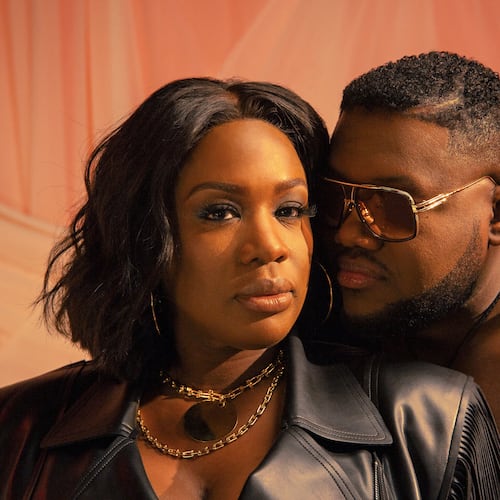It had to end this way. Mezzo soprano Kelley O’Connor, who has collaborated with the Atlanta Symphony Orchestra and Robert Spano frequently over the past two decades, was there. So too was a contingent from the ASO Chorus, which has shared in some of Spano’s greatest triumphs as music director, and the Georgia Boy Choir.
On Thursday night, the start of Spano’s last weekend of concerts leading the ASO, it had to be the massive third symphony by Gustav Mahler, performed by what looked to be the largest collection of musicians that have been on the Symphony Hall stage since the start of the pandemic. Spano led a very different ASO in the work in 2010, around the halfway mark in his tenure with the orchestra. In 1984, Robert Shaw led the only other ASO performance of the composition, which is presented without intermission.
Spano, of course, is no stranger to lengthy Mahler compositions. He was at the podium for the all-hands-on-deck performance of Symphony No. 8, better known as the “Symphony of A Thousand,” in November 2019 — a crowning achievement in his quest, along with principal guest conductor Donald Runnicles, to perform a complete cycle of the 10 Mahler symphonies. O’Connor was also onstage for that, as were the ASO Chorus, the Georgia Boy Choir and what indeed seemed like a million other voices.
Credit: Jeff Roffman
Credit: Jeff Roffman
Length was never an issue on Thursday. Even at more than 100 minutes, the six-movement Mahler masterwork felt like it couldn’t be edited it all. The first movement ran well past the 30-minute mark, but never sounded overly long. Spano had the musicians playing with determination and vigor, moving the music along even in the quietest passages. There are passages played at a murmur, but the symphony also has plenty of noise — all those musicians playing fortissimo, the E-flat clarinet yelling out at top volume. Those bracing scenes of cacophony intensified the quiet.
There’s such a force of instrumental voices on stage that a certain depth of sound is a given, but Spano’s deliberate care made sure the ensemble’s blend and unified dynamics remained a focus. This seemed no easy task; at any point in the work, myriad instrumental sections are playing different themes, approaching the music with a different feel. For much of the piece, brass leads the charge. Over the last decade, the low brass has become a reliable asset for the ASO, and Thursday night was their time to shine, from the magisterial opening bars of the first movement to leading blisteringly forceful sections later in the piece.
The entire composition is, by design, rife with pastoral ambiance, but doesn’t rely on woodwinds to create a woodsy feel. At times, concertmaster David Coucheron turned his Stradivarius into a country fiddle, playing a tuneful passage; later, the entire ensemble mimicked animal calls.
There were moments of such exquisite delight hat they almost come as a surprise. Principal oboe Elizabeth Koch Tiscione, at the start of the second movement, played a skipping, carefree solo over a lush pizzicato fog, passing her melody effortlessly to the violins as the dynamics grew louder. In the fourth movement, O’Connor took the stage for what sounded almost like the blues — complete with what sounded like blue notes from the orchestra — but instead of conveying abject mourning or even a gentle warning for the text that begins with “O Man! Take Heed!,” she affected a more forceful tone, at times full of delicious contempt carried to the audience on carefully enunciated German. After O’Connor’s solo, the 50-odd women of the ASO Chorus and the pint-sized Georgia Boy Choir, who had been sitting attentively on risers behind the orchestra for more than an hour, finally saw the spotlight. In the scheme of the symphony, it’s a blink-and-you-miss it appearance, but the choirs, in fine voice Thursday after being tasked to sing after sitting for so long, added a grain at once both light and deep to the proceedings.
The symphony ended with a gentle instrumental hymn, a sotto voce reflection of everything that has come to pass (and it does feel like Mahler’s symphony has everything). There felt like no greater way to sum up Robert Spano’s career in Atlanta.
CONCERT REVIEW
Atlanta Symphony Orchestra
Additional performances 8 p.m. June 11; 3 p.m. June 12. $29-$120. Symphony Hall, 1280 Peachtree St. NE, Atlanta. 404-733-5000, atlantasymphony.org.
About the Author
Keep Reading
The Latest
Featured


